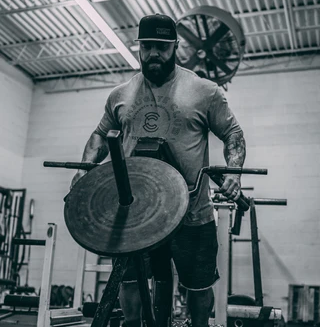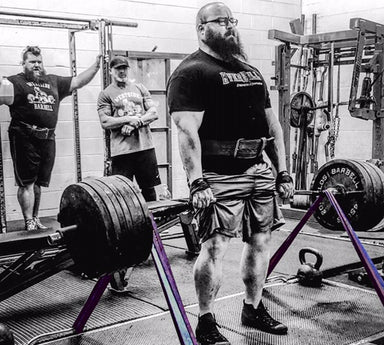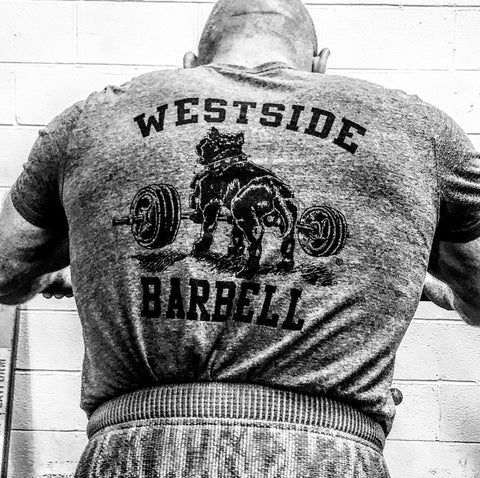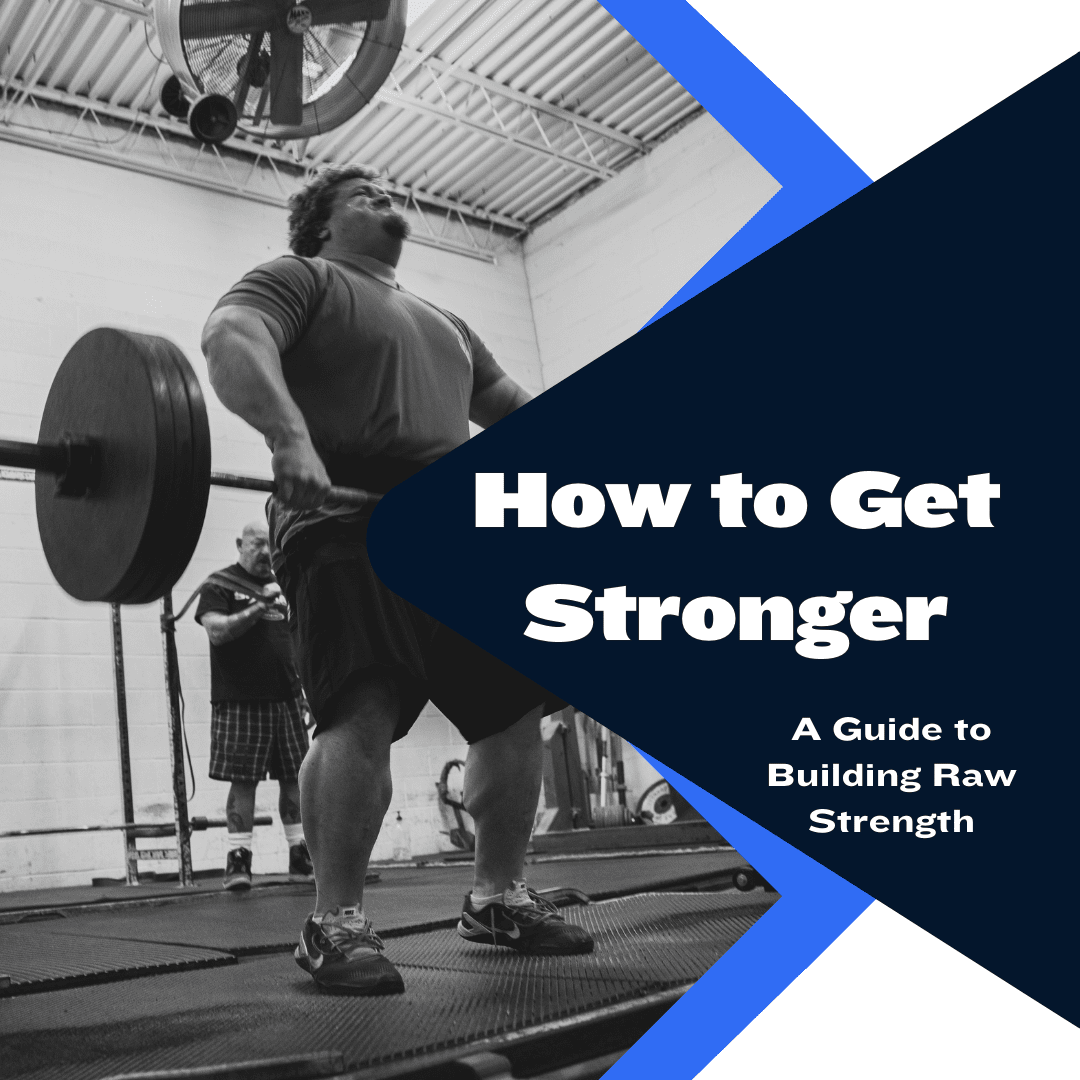How to Get Stronger: A Guide to Building Raw Strength

Strength training is one of the most beneficial physical activities an athlete can engage in. Unlike other methods of exercise, such as running, cycling, or participating in organized sports, strength training allows the individual to continuously improve by making periodic changes to the training plan.
When performing many other forms of physical activity, the body eventually acclimates to the demands placed upon it, and stagnation in improvement occurs. With strength training, we are afforded the tools to consistently provide the stimulus that allows for improvements in athletic qualities and traits to be made. As accommodation sets in, we make subtle adjustments to the stimulus to ensure further progress can be achieved.
At Westside, we have helped athletes develop strength for many years and can attest to the importance of strength-focused training for both the average human and the high-level athlete. No matter how gifted an individual is, simply participating in sports is not enough to allow continuous athletic improvement. If an athlete wants to reach their full potential, they must train to improve their strength.
Understanding the Basics of Strength
The development of raw strength allows the athlete to enhance absolute and explosive strength levels while also providing physiological benefits such as increased bone and tissue density and a higher level of durability and resilience. Simply put, an athlete becomes stronger, faster, and tougher by improving raw strength.
Strength is defined as the quality or state of being physically strong or the capacity of an object or substance to withstand great force or pressure. So, how does one go about becoming stronger? By consistently training at levels of intensity and volume that provide meaningful stimulus to trigger physiological adaptations that lead to improved performance in sports.
If we look at the big picture, it is a simple process; we must consistently increase the demands placed on the athlete to bring about further positive training adaptations. However, as we look closer, much more goes into developing an athlete's strength.
Proper strength training calls for a synergistic relationship between strength and hypertrophy-focused training. Not only do we want to improve the athlete's physical strength, but we also want to improve the physical composition of the athlete. Both goals can be achieved when strength training, as long as training intensity and volume are regulated appropriately.
At Westside, we follow a basic workout template to ensure both gains in strength and physical composition are able to be made. Each workout will feature a main exercise focused on developing a specific strength, followed by hypertrophy-focused exercises designed to increase muscle mass and further develop muscle groups identified as weak.
When developing strength, we focus on training at specific levels of intensity and velocity to target specific special strengths. While training volume is still a factor to some degree, the main focus is ensuring the athlete is training at intensities and velocities that allow for beneficial neuromuscular and musculoskeletal adaptations to occur. This is where max effort and dynamic effort training enter the equation.
Improving physical composition is a bit different. Instead of focusing solely on training intensity and velocity, we are more concerned with training volume. The goal here is to train with weights that provide optimal levels of mechanical tension to trigger a growth response in the targeted muscle or muscle group. Accessory training is considered repeated effort training and will improve the athlete's physical composition and work capacity.
The Importance of a Solid Foundation
An athlete's ability to accomplish and endure a demanding training program depends on the level of foundational strength and skill the athlete possesses. In simple terms, we refer to this as "base building," which refers to the introductory strength training phase. This phase can last as little as three months or as long as three years, depending on the individual.
Typically, the more naturally gifted an athlete is, the less time they will need to take to build foundational levels of strength and movement skills before moving on to a more advanced level of training. Appropriate base-building training uses basic exercises prescribed at varying levels of intensity and volume to simultaneously develop base strength, work capacity, muscle mass, and movement skills.
This introductory phase is also where the "beginner gains" occur. Beginner gains refer to the initial gains made by an individual during the first few months of training. Typically, these gains are amplified due to the training providing a brand-new stimulus to the body. This initial gain in strength will depend on the training and genetics of the individual but will occur in all athletes to some degree.
Beginner gains are simply a response from the body to meet the sudden demands placed upon it. However, as training progresses, the rate of progression will begin to decrease slightly. This is due to the body acclimating to the demands of training, which reduces the physiological adaptations caused by the training.
This is why we begin using exercise variation with more experienced athletes: to avoid accommodation and allow positive training adaptations to continue at a reasonable rate.
Additionally, base-building-focused training provides an athlete with valuable practice reps to learn the proper technical execution of basic barbell exercises. As the athlete begins training, it is essential to ensure each movement is performed to standard consistently. Bad habits formed in the base-building phase can follow an athlete as they progress and lead to catastrophic injury in the future.
When building base strength, the goal should be to perform basic variations and movements at different levels of intensity and volume to allow for as much positive adaptation as possible. This training will set the course for the individual regarding their strength training journey and should be taken very seriously.

Structured Training Programs for Strength
Regarding strength training methods and periodization, it all boils down to two approaches: linear-based and Conjugate-based training. Linear-based training incorporates long-term or short-term training phases to focus on developing one aspect of strength or athletic ability at a time. Conjugate-based training eliminates the use of phases, focusing on simultaneously developing strength and athletic qualities.
Here is a simplistic scheduling breakdown of each method:
Linear-Based Plan
Month 1-3: Volume/Hypertrophy
Month 4-6: Explosive Power
Month 7-9: Absolute Strength
Conjugate-Based Plan
Day 1: Max Effort/Hypertrophy Lower
Day 2: Max Effort/Hypertrophy Upper
Day 3: Dynamic Effort/Hypertrophy Lower
Day 4: Dynamic Effort/Hypertrophy Upper
As you can see, the approaches are very different from one another. With the linear-based plan, substantial blocks of time are dedicated to specific aspects of strength. This is less than optimal, considering the amount of detraining that occurs between phases. As the athlete progresses in the linear plan, detraining continues between phases, leading to a peaks and valleys pattern of improvement.
With the Conjugate-based plan, we address all aspects of strength every week. This leads to very little, if any, detraining and allows athletes to progress in a pattern resembling stair steps. Instead of sacrificing one strength to improve another, we simultaneously improve all strengths and athletic traits. As long as programming is properly designed and recovery is appropriately managed, Conjugate-based training is the most efficient and effective training method for training athletes.
The Role of Progressive Overload
Progressive overload refers to gradually increasing training intensity, volume, or density to allow for continual adaptation. To put it simply, for training to remain effective, it must become more difficult as the athlete improves. Just as it does an athlete no good to try and train at levels of volume and intensity well above their ability level, it does an athlete no good to continue training at levels of volume and intensity they have already adapted to.
When using the Conjugate Method, athletes will strive to escalate their accessory exercise training weights weekly as long as energy levels allow them to. Additionally, athletes will strive to achieve PRs during max effort main exercise variations throughout the month. Typically, if we run a rotation of four exercise variations, we expect to PR in all four within 6-8 weeks.
Then, as these PR lifts occur, our dynamic effort main exercise working weight will be adjusted to match the newly established PR lift. This provides an additional layer of progressive overload, providing us with three ways to overload the athlete progressively: accessory training, max effort training, and dynamic effort training.
As long as training is programmed and executed correctly, the Conjugate Method provides multiple avenues of progressive overload, leading to rapid gains in strength and work capacity.

Using Variations and Accessory Exercises
One aspect of Conjugate-based training that makes it so effective is using variations and specifically selected accessory exercises. When we design a Conjugate training program, the main focus is optimization and efficiency. We want to put together a plan that meets the athletes where they are currently and delivers appropriate stimulus that leads to rapid improvement.
No matter the issue or weakness an athlete is experiencing, we are able to evaluate the athlete and put together a comprehensive training plan that can solve whatever issue or weakness they are currently dealing with. If an athlete has no glaring weaknesses, the use of main and accessory exercise variation can help avoid gaps in strength or imbalances.
For instance, if an athlete is dealing with a lower-body posterior chain weakness, we can use a main exercise such as a giant cambered bar good morning to begin correcting the issue. Conversely, if the athlete is dealing with a lower-body anterior chain weakness, we can use a main exercise such as the SSB squat or front squat to address the problem.
The same goes for accessory training. Suppose an athlete is dealing with a triceps weakness. In that case, we can increase the volume and intensity of triceps accessory training or select an exercise variation that precisely targets the weakness. This makes the Conjugate Method the most effective method; we can always devise a plan to improve the athlete regardless of the athlete's condition.
Deloads, Recovery, and Injury Prevention
The ability of an athlete to recover from training will always dictate the level of success the athlete has with the training program they are currently undertaking. Whether the athlete is using linear or Conjugated-based training, an appropriate recovery schedule must be implemented and maintained to allow continuous improvement.
At Westside, we typically train four days per week, every week. If we work with an athlete with a demanding sports practice schedule, we will cut this training down to three days per week. This leaves us with 3-4 recovery days per week. It is absolutely essential to take advantage of these days and get as much rest as possible if training is to remain optimal.
Failure to properly recover will result in stagnation in strength and athletic improvement or injury at worst. When recovery issues arise, it is crucial to address them immediately to avoid excess fatigue becoming a longstanding issue.
To do this, we will make slight adjustments to the training program. Typically, our first move will be to begin lowering our accessory exercise training volume. If this fails, we will leave 1-2 sets in the tank when training max effort. If neither option completely alleviates the issue, we will lower our dynamic effort training percentages by 5-10% each week.
Usually, most athletes respond positively to the slight reduction in accessory exercise volume combined with additional focus on maximizing recovery days. However, if all three strategies have been implemented and fatigue is still a significant issue, a week off from strength training may be warranted.
Remember that every situation is different, and nuance is always involved when working with athletes. As a coach, it is vital to make the most rational decision based on the evidence presented in the execution of training and the accompanying training data.
Not only will this help to keep recovery on track, but it will also help to reduce the risk of injury while training. Excess fatigue can cause issues with execution and recovery rate that will almost certainly result in injury if corrective actions are not taken. The best way to prevent injury is to ensure recovery is properly managed every week.
Mental Aspects of Getting Stronger
While strength training is a physical pursuit, there is, of course, a mental aspect to it as well. Having the correct mindset and outlook on training helps to keep the athlete focused and engaged in the strength training process. Typically, the more mentally engaged with the training that an athlete is, the greater the results and outcomes of the training will be.
As with nearly anything in life, simply going through the motions will not be enough to achieve optimal training results. For training to succeed, an athlete must be locked in every set and rep. Not only will this allow the athlete to benefit more from the training, but it will also help to reduce the chance of injury due to improper execution of an exercise.
Aside from remaining focused during training, athletes also want to maintain a positive attitude and outlook regarding the training process. Poor workouts and bad weeks of training happen; it is a part of the game. However, the successful athlete realizes this is just one training day and remains optimistic about the future. This mindset helps to keep focus and motivation high throughout the training process.
The worst thing an athlete can do is dwell on poor performances. Whether in sports or the gym, an athlete cannot let one instance of failure dictate the outcome of future attempts and training sessions. Bad days will happen in the gym; there is no way around it. Don't let one bad day lead into another; get your mind right and make the best of the next training session.
Always remember that lousy training days occur due to the execution of the plan. Either an athlete fails to recover correctly or execute the training plan properly. No matter what, the athlete is responsible for getting their mind right and correcting the issue. Just as a hitting coach can't talk a batter out of a slump, a coach cannot talk an athlete into a positive state of mind.
The athlete must control their mental state, remain disciplined, and keep emotions in check. If you wish to become as physically strong as possible, you must become as mentally strong as possible.

Frequently Asked Questions
Q: How do I get strong as fast as possible?
A: While there is no "fast" route to strength, there is an efficient route; the Conjugate Method.
Q: How do I get stronger without getting bigger?
A: Increasing body weight will depend on excess caloric intake. To avoid gaining excess weight, you need to find the correct amount of calories to allow for recovery without any excess calories that could result in weight gain. This will take time to get dialed in.
Q: How long does it take to get stronger?
A: As you begin training, you may recognize improvements in strength as quickly as 4-8 weeks.
Q: How soon should I implement exercise variations into training?
A: This will depend on the individual. However, we recommend sticking to basic movements for the first 12-16 weeks of training.
Q: Should beginners use bands and chains?
A: While accommodating resistance training is beneficial for all athletes regardless of level, we typically recommend athletes wait at least 12 weeks before using accommodating resistance. This ensures that the athlete understands basic exercise execution and has built the strength necessary to use accommodating resistance safely.
Strength Training is the Answer
Improving physical strength and body composition is a surefire way to become a better athlete. Aside from the sports performance-enhancing effects, strength training also provides stimulus to enhance the short- and long-term quality of life. A properly trained athlete will have increased strength and speed, enhanced bone and tissue density, improved mobility, and the ability to endure and recover from intense training and competition.
Aside from the fact that the grocery bill may increase a bit, there is no downside to improving the physical strength of an athlete. Too often, you see individuals obsessed with cardiovascular or speed-based training who believe strength training is either too risky or results in decreased athletic performance. This is an absurd stance for any respectable strength and conditioning coach to take.
Whether you are a powerlifter, football player, MMA fighter, or golfer, becoming a stronger version of your current self will only help enhance your sports performance and overall quality of life. Are we saying a golfer should work to become 300 lbs with traps to their ears? Of course not. Should a golfer work to become a stronger, more physically fit golfer? Absolutely.
As athletes find the sport that best suits their genetics, they must also find a training program that allows them to develop their genetic gifts as much as possible. This is where strength training and the weight room enter the equation. Want to improve your sports performance? Strength training is the answer.
Sources:
Simmons, L. (2007). Westside Barbell Book of Methods. Westside Barbell.
Verkhoshansky, Y., & Siff, M. C. (2009). Supertraining. Verkhoshansky.
Zatsiorsky, V. M., & Kraemer, W. J. (2006). Science and Practice of Strength Training. Human Kinetics




